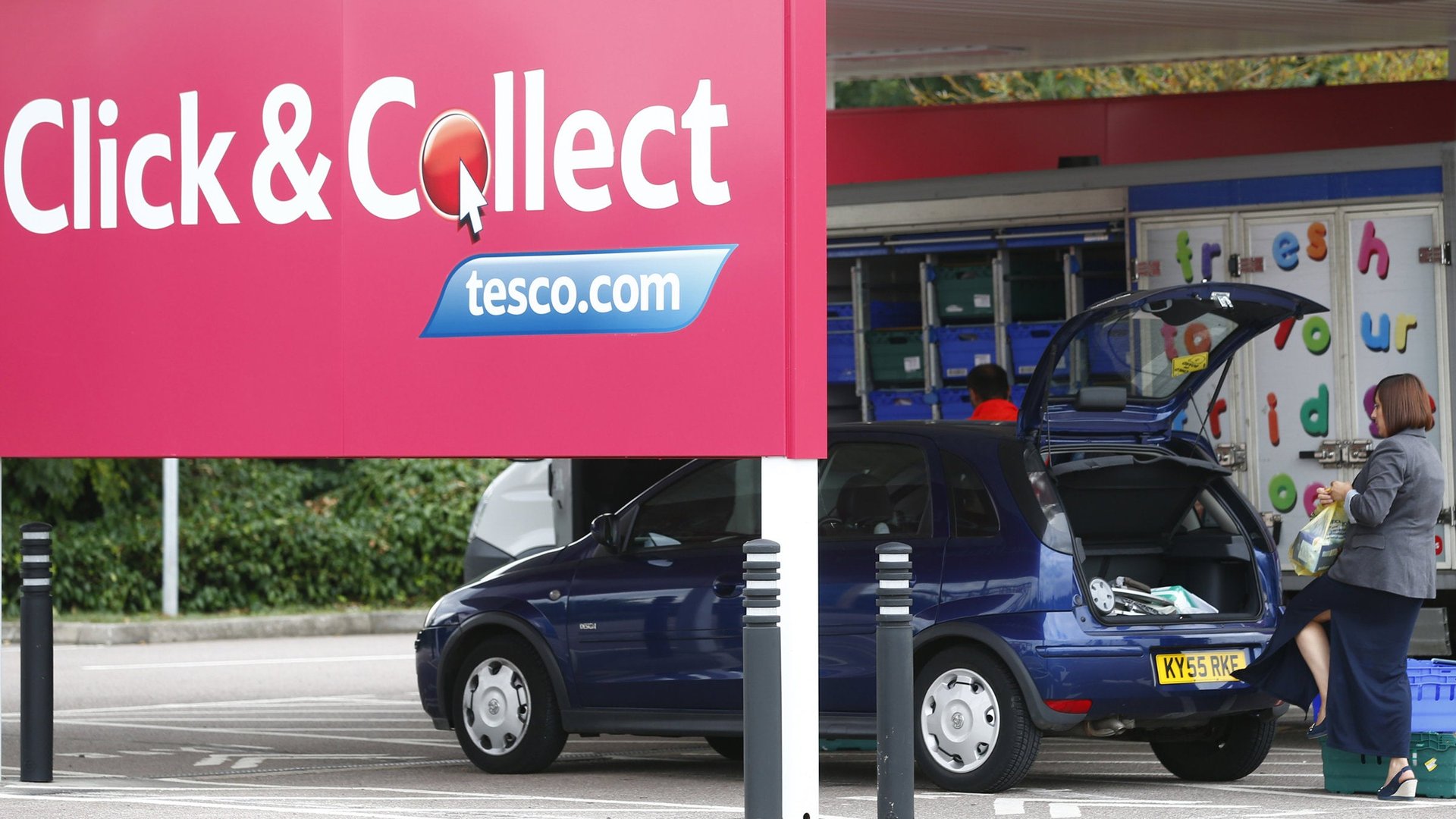Britain’s biggest supermarket wants to become the country’s Amazon—by selling a £99 tablet
Tesco, Britain’s largest and most profitable supermarket chain, is expected to release a tablet computer on Sept. 23. Rumors that Tesco had been working on a tablet, called Hudl, are not new. But today the company sent out invitations bearing the Hudl logo to journalists, with the tagline, “We’ve got something to show you.”


Tesco, Britain’s largest and most profitable supermarket chain, is expected to release a tablet computer on Sept. 23. Rumors that Tesco had been working on a tablet, called Hudl, are not new. But today the company sent out invitations bearing the Hudl logo to journalists, with the tagline, “We’ve got something to show you.”
While it may sound odd for a supermarket to enter the cut-throat hardware retail business and compete with cheap Chinese devices, high-end iPads and everything in between, Tesco’s move has little to do with the tablet itself. Instead, it will sell the tablet at throwaway prices and hope to establish itself as a retailer of digital goods and services. “It makes sense in the same way as it does for Amazon,” said one analyst who declined to be named because his firm works with some of the companies mentioned.
Founded in 1924, Tesco has grown from a simple grocery store to a sprawling hyper-mart that aims to build a suite of online services rivaling Amazon’s. It acquired a large stake in BlinkBox, a video-streaming service, in 2011. It already sells a cornucopia of groceries, clothes, books and other household goods through its online store. It even offers banking services, cheap talk-time for cellphones, gas stations and a restaurant chain.
Like Amazon, its retail dominance stems from selling products at razor-thin margins. As a result, most major supermarkets in Britain now offer a “Tesco price match” for branded groceries. More importantly, Tesco has cultivated customer loyalty by becoming an early adopter of loyalty cards. Its latest endeavor is “to go towards a closer involvement of at least some part of consumers’ lifestyle ” the analyst said. The tablet becomes “a point of interaction, predominantly at home, with the most important services via Tesco as a trusted brand.”
Any tablet produced by Tesco is bound to be focused on its main customer segment of value-seeking shoppers. Ben Wood of CCS Insight, a research firm, told the Guardian he expects it to retail for £99 ($157).
The tablet sales pitch may be easier for Tesco than Amazon. Amazon has a distinct lead in online services, but unless customers come to its website, it’s hard for it to sell its tablet. All Tesco has to do is display the Hudl prominently in every one of its 3,124 stores across the UK—and maybe in some restaurants too—for its tablet to gain visibility. Few aspects of British life have yet to be infiltrated by Tesco. The country’s digital realm may soon be occupied, too.